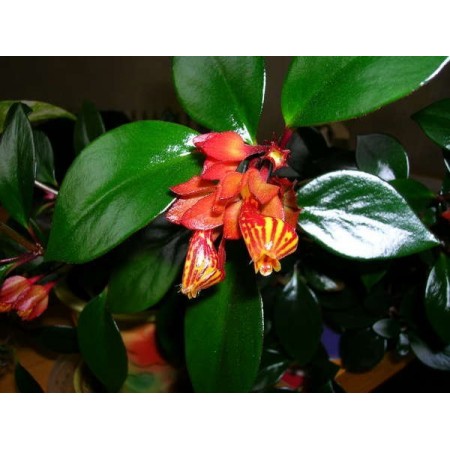Nematanthus cultivation

Nematanthus can be very often seen in the forests of South America - a flower appears in dark places (usually in hollows of trees). This representative of the flora has beautiful flowers and a lush deciduous crown, and now we will try to figure out how to properly grow nematanthus at home.
Lighting and air temperature
Nemantanthus loves the abundance of sunlight. The scattered ultraviolet light affects it favorably, but the plant is best preserved from direct sunlight. The best place for a flowerpot with a flower are window sills, windows facing the east or west side of the house. If you plan to install it on the south side, then thick curtains should be hung between the window and the flowerpot. On the north side, on the contrary, there will be insufficient lighting and it is best for nematanthus to provide access to an additional light source - install a fluorescent lamp near the pot.
As for air temperature, we can safely say that the flower will not bloom in too hot places. So that the plant does not suffer from too high temperatures, the nematanthus should, in addition to normal watering, be sprayed from the spray gun at least once a day.
In summer and spring, the optimum temperature in a room with a flower should be within 20-24 degrees. In winter, the temperature in the house should not fall below 16 degrees. In general, this requirement is not something specific, so the nematanthus is not in vain considered an unpretentious plant, the cultivation of which is not associated with many problems and inconveniences for humans.
Watering a plant
Nematanthus is equally unfavorable to the drying up of an earthen coma or to a bay. For watering, it is best to use a warm, settled liquid that does not contain impurities harmful to the living organism.
The first sign of lack of moisture in the soil is falling leaves of nematanthus, and this can happen not only in the summer. In the warm season, it will be necessary to moisten the earthen lump immediately after its drying becomes noticeable. In winter, the amount of watering is reduced, as the flower hibernates and does not require so much moisture.
Breeding
Nematanthus can be propagated by seeds and cuttings. The first technique is associated with certain nuances, so it is best to choose the second option. At the same time, for propagation, it is allowed to use not only apical, but also stem cuttings.
If you plan to use the seeds, then they should be laid out on an earthen substrate and watered exclusively through a pallet. Before the first shoots appear, the young plant is covered with glass. Flowering itself, subject to all conditions, may begin as early as next season.